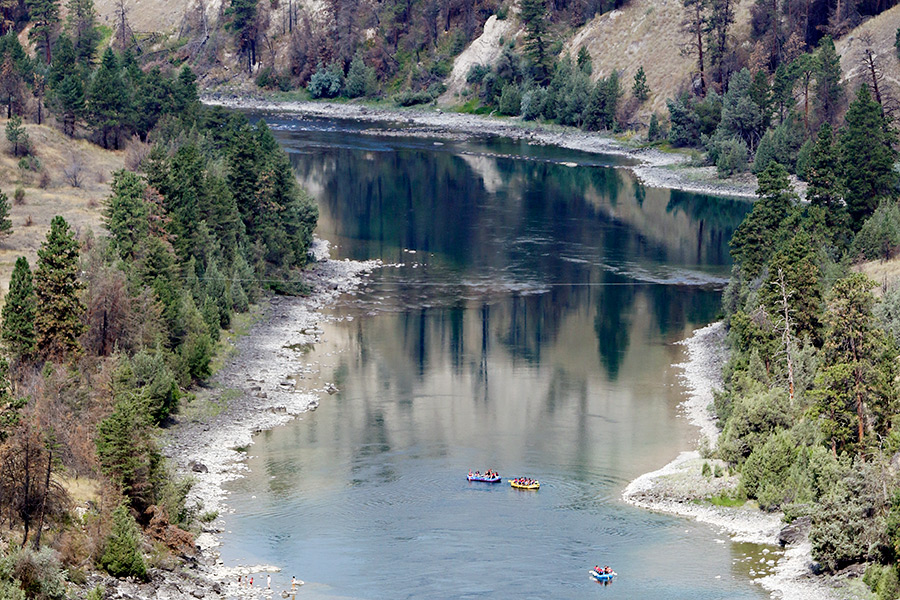The two primary tributaries of the Flathead River have the lowest streamflows on record for late August, further reflecting the extreme drought conditions that are tormenting the region in a year being defined by smoky skies and stingy weather.
Entering the final days of August, the Middle Fork Flathead River was running at 470 cubic feet per second, a new record surpassing the previous low set in 1940, according to the National Weather Service. The median flow for this time of year is 977 cfs.
The North Fork Flathead River was running at 628 cfs, surpassing the 2001 record low. The median flow is 1,260 cfs.
The streamflows are the lowest since monitoring gauges were established 75 years ago, according to Ray Nickless, NWS hydrologist.
The Fisher and Yaak rivers, two of the primary rivers leading into the Kootenai, are also near record lows, Nickless said.
Both the main stem of the Flathead and Kootenai are being aided by input from dams in Hungry Horse and Libby, respectively, he said.
“Those rivers would be much lower if they weren’t being helped out by the dams, but of course those dams are drawing way down as well,” he said.
The water temperatures in the Flathead appear to be staying around normal, between 58-60 degrees, he said.
Northwest Montana is in the clutches of an extreme drought following an unprecedented spring and erratic summer. The month of August has received only 0.07 inches of rain in Kalispell, three-quarters of an inch below the historical average, according to NWS data. The average temperature has been 1.1 degree warmer than normal. It has fluctuated from a monthly high of 101 degrees on Aug. 1 to a new record low, which was set Aug. 23 with 31 degrees. Kalispell experienced its driest May on record and warmest June on record. July was the sixth warmest on record.
Drought and weather conditions have fueled wildfires across the region, and as of Aug. 27, 303 square miles had burned in Montana, mostly in this corner of the state.
But perhaps the greatest impact has fallen on farmers and ranchers.
Livestock producers in Lake County are showing losses up to 70 percent of pasture and hay yields. Some may be forced to liquidate a portion or all of their livestock, according to a letter written by Gov. Steve Bullock urging the U.S. Department of Agriculture to declare a natural disaster in the county.
“Extreme heat in June and July has stressed crops and created extraordinary demand for irrigation throughout Montana,” he wrote in the Aug. 24 letter.
Ed Daugherty, the Montana State Farm Service Agency county executive director for Lake and Sanders County, said producers throughout the area are struggling.
“I’ve had several hay growers tell me they’ve gotten anywhere from 10 to 25 percent of what they normally get,” he said.
Many farmers are reporting eight to 10 bushels per acre, compared to the average of 40, he said.
The FSA announced recently that 15 counties in the state, including Lake, Flathead, Lincoln, Sanders and Glacier, are eligible for assistance through the Livestock Forage Disaster Program. Producers must send applications and provide documentation of losses by Feb. 1.
“This is God’s country. We don’t normally have disasters like this,” he said.
“It’s a tough year.”
